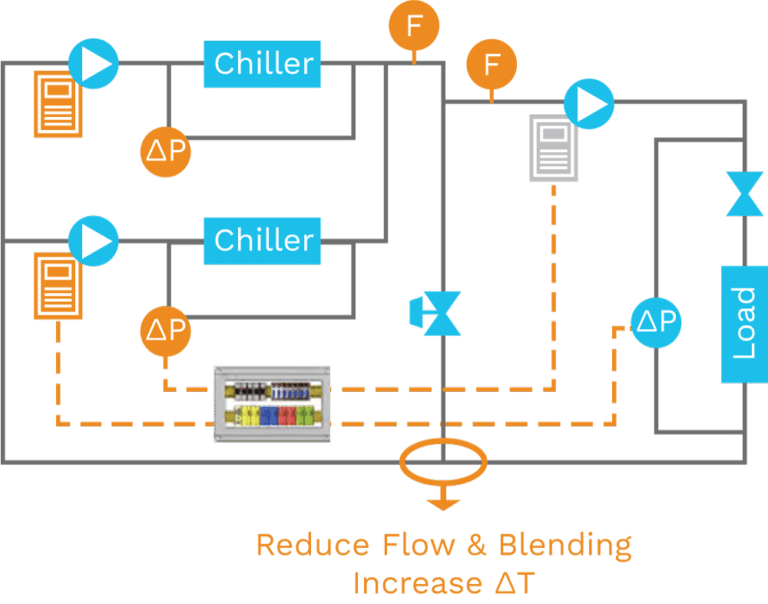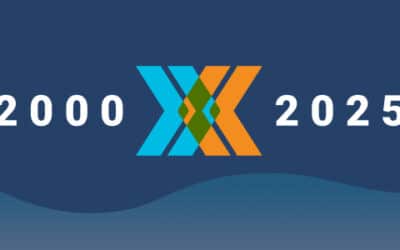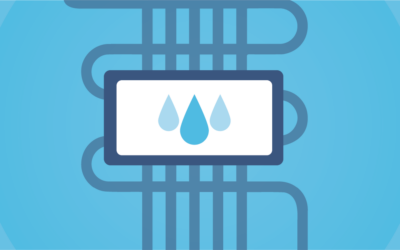In the quest for energy efficiency, facility managers and engineers are discovering that successfully retrofitting existing Primary/Secondary chilled water systems can unlock significant performance improvements and cost savings without the need for complete system replacements.
The Evolution of Chilled Water Systems
The landscape of chilled water systems has evolved significantly over the past few decades, driven by technological advancements and the ever-present need for improved energy efficiency. To understand the importance of modern retrofits, it’s crucial to look at the historical context of these systems.
The Rise of Primary/Secondary (P/S) Cooling Design
In the 1970s, a significant technological breakthrough occurred with the introduction of variable speed drives. This innovation paved the way for the creation of the Primary/Secondary (P/S) design in chilled water systems. The P/S design was developed to capitalize on two key advantages:
- The ability to modulate flow with load
- Enhanced flexibility for chiller staging
Importantly, this new design also met a critical requirement of the time: maintaining constant evaporator flow. These benefits led to the P/S design quickly becoming the industry standard, a position it held even as technology continued to advance.
Persistence of P/S Design
Interestingly, the prevalence of the P/S design continued well into the 1990s and beyond, even after significant technological advancements had been made. The 1990s saw the introduction of microprocessor chiller controls, which unlocked previously unattainable efficiency gains. However, many new plant constructions still defaulted to the P/S design, despite these new possibilities for improved efficiency.
Limitations of the Primary/Secondary Design
While the P/S design was revolutionary for its time, it has some significant limitations in the context of modern efficiency standards and capabilities:
Focus on Peak Load
The main shortcoming of the P/S layout is its cooling strategy, which is primarily focused on the hottest day of the year. This approach creates inadequate energy efficiency for the remaining 364 days, leading to unnecessary energy consumption and increased operational costs.
P/S Bypass Blending: A Major Efficiency Drawback
One of the biggest energy efficiency drawbacks of the P/S system is the phenomenon known as P/S bypass blending. This issue arises due to three interconnected factors:
- Unused Chilled Water Flow: Chilled water not used by the load flows through the bypass.
- Return Water Blending: This bypass flow blends with warm return water.
- Decreased ΔT: The blending decreases the temperature of the return water into the chiller, thereby lowering the temperature differential (ΔT).
The consequence of this process is that chillers must work much harder than necessary to maintain the designated temperature setpoint, resulting in increased energy consumption and reduced system efficiency.
Effective Energy Solutions: tekWorx IPS® Retrofit
Fortunately, these existing P/S systems don’t have to remain inefficient. tekWorx has developed an innovative solution: the Integrated Primary/Secondary (IPS®) retrofit design. This retrofit offers a way to significantly improve the efficiency of existing P/S systems without requiring a complete system overhaul.
Key Features of the IPS® Retrofit
The IPS® retrofit is designed to be minimally invasive while maximizing efficiency gains. It offers:
- Minor Modifications: Only minor mechanical and control system modifications are required.
- Quick Installation: The retrofit has a short installation time.
- Minimal Disruption: System disruption is kept to a minimum during the retrofit process.
IPS® Retrofit Implementation
The IPS® retrofit focuses on several key aspects to improve system efficiency:
- Minimizing Bypass Flow: This is achieved by inserting a bypass valve. In instances where inserting a bypass valve is not an option – because it requires plant shutdown or other circumstances make this modification impractical – there is an alternative. Instead, tekWorx matches the primary and secondary loop flow to minimize bypass flow. Reducing bypass flow minimizes the associated return water blending that degrades system ΔT.
- Variable Speed Controls: Adding variable speed controls for pumps, fans, and chillers as needed allows for more precise and efficient operation.
- Enhanced Instrumentation: New instruments are added to measure process variables affecting operation and efficiency (usually flow and kW).
- Adaptive Control Algorithms: These are used for continuous online equipment adjustment, ensuring optimal performance under varying conditions.

The Primary/Secondary configuration in hydronic cooling systems provides a balanced approach to achieving efficient and reliable cooling. Its ability to maintain stable chiller operation while dynamically responding to changing cooling demands makes it an excellent choice for large commercial and industrial applications. With the integration of tekWorx IPS® strategies and optimization technologies, the traditional Primary/Secondary configuration can be further enhanced to optimize comfort levels, minimize energy consumption, and achieve long-term sustainability goals.




